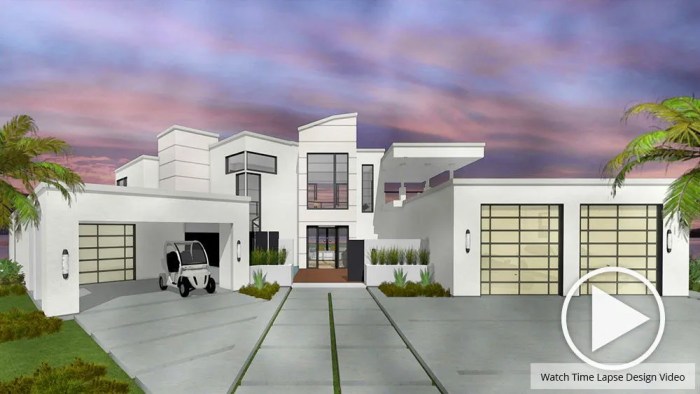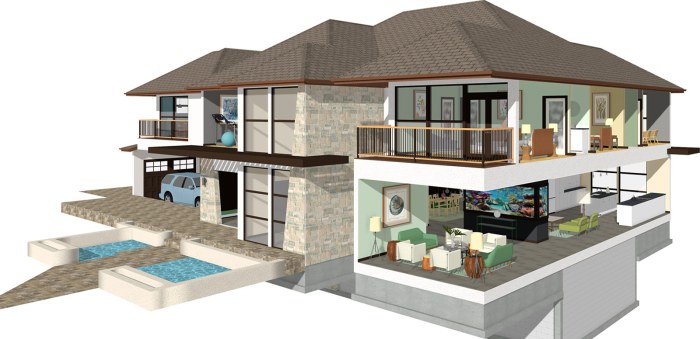Crafting the Perfect Home: A Guide to Home Designers
Embark on a journey into the world of home designers, where creativity meets functionality to transform houses into dream homes. From innovative design styles to cutting-edge technology, explore the realm of home design with us.
Delve into the realm of home designers and discover the art of creating spaces that inspire and captivate.
Introduction to Home Designers

Home designers play a crucial role in creating functional, aesthetically pleasing, and personalized living spaces for their clients. They are responsible for designing the layout, selecting materials, and coordinating with other professionals to bring a home design project to life.
Hiring a professional home designer is important as they have the expertise and experience to transform ideas into practical designs while considering factors like budget, functionality, and aesthetics. They can also provide valuable insights and recommendations to enhance the overall design concept.
Skills and Qualifications
- Proficiency in design software such as AutoCAD or SketchUp
- Strong knowledge of architectural principles and building codes
- Excellent communication and problem-solving skills
- Creativity and attention to detail
Home Design Styles
Home designers work with various design styles to cater to the preferences and needs of different clients. Some popular home design styles include:
- Modern: Clean lines, minimalistic design, and open spaces
- Traditional: Classic and timeless elements, warm colors, and ornate details
- Contemporary: Current trends, innovative materials, and unique architectural features
- Transitional: Blend of traditional and modern elements, creating a harmonious balance
Services Offered by Home Designers
Home designers offer a range of services to help clients bring their design visions to life. From initial consultations to final project completion, home designers play a crucial role in creating functional and aesthetically pleasing spaces.
Residential Home Designers vs. Commercial Home Designers
Residential home designers focus on creating living spaces that cater to the needs and preferences of homeowners. They work on projects such as single-family homes, apartments, and condominiums, prioritizing comfort and personal style. On the other hand, commercial home designers specialize in designing spaces for businesses, such as offices, retail stores, and restaurants.
They prioritize functionality, branding, and the overall customer experience.
Collaborating with a Home Designer
Collaborating with a home designer typically involves several key steps. The process usually begins with an initial consultation where the designer gathers information about the client's requirements, budget, and design preferences. From there, the designer creates design concepts, presents them to the client for feedback, and refines the designs based on the client's input.
Once the final design is approved, the designer oversees the implementation of the project to ensure that it is completed according to the client's specifications.
Utilization of Technology and Software
Home designers leverage technology and software tools to enhance their design process. From CAD (Computer-Aided Design) software to 3D modeling programs, these tools allow designers to create detailed plans, visualize spaces, and make modifications easily. Additionally, virtual reality and augmented reality technologies enable clients to experience a design concept in a more immersive way before construction begins.
By embracing these technological advancements, home designers can deliver more accurate and innovative designs to their clients.
Trends in Home Design
Home design trends are constantly evolving to meet the changing needs and preferences of homeowners. Today, we see a shift towards sustainable and eco-friendly design practices, as well as the integration of smart home technology for added convenience and efficiency.
Sustainable and Eco-Friendly Design Practices
In response to growing environmental concerns, home designers are increasingly incorporating sustainable and eco-friendly design practices into their projects. This includes the use of recycled materials, energy-efficient appliances, and passive design strategies to reduce the carbon footprint of residential buildings.
- Utilizing renewable energy sources such as solar panels or geothermal heating systems.
- Implementing water-saving fixtures and systems to reduce water consumption.
- Incorporating natural ventilation and daylighting techniques to enhance indoor air quality and reduce the need for artificial lighting.
Smart Home Technology
The rise of smart home technology has revolutionized modern home design, offering homeowners greater control and automation over various systems within their homes. Home designers are now integrating features such as smart thermostats, lighting controls, and security systems to enhance comfort, convenience, and security
- Installation of voice-activated assistants like Amazon Alexa or Google Home for hands-free control of home devices.
- Integration of smart appliances that can be remotely monitored and controlled via smartphone apps.
- Implementation of automated systems for energy management and security monitoring.
Innovative Materials and Techniques
Home designers are constantly exploring new materials and techniques to push the boundaries of traditional home design. From cutting-edge building materials to innovative construction methods, these advancements are shaping the future of residential architecture.
- Use of recycled and upcycled materials for a more sustainable approach to construction.
- Adoption of modular construction techniques to streamline the building process and reduce waste.
- Exploration of 3D printing technology for creating custom architectural elements and furniture pieces.
Challenges Faced by Home Designers

Home designers often encounter various challenges in their profession that can impact the success of their projects. From client expectations to budget constraints, navigating these obstacles requires creativity and strategic thinking.
Client Expectations
One of the common challenges for home designers is managing client expectations. Clients may have specific ideas and preferences that do not align with the designer's vision. To overcome this challenge, effective communication is key. Home designers should actively listen to clients, provide clear explanations of design choices, and collaborate to find solutions that satisfy both parties.
Budget Constraints
Another significant challenge in home design projects is working within budget constraints. Clients may have limited funds, requiring designers to be resourceful and creative in their design choices. To overcome this challenge, home designers can explore cost-effective materials, repurpose existing elements, and prioritize essential design elements to deliver a high-quality outcome within the budget.
Staying Inspired and Innovative
Home designers must constantly stay inspired and innovate to remain competitive in the industry. To overcome creative blocks and maintain a fresh perspective, designers can seek inspiration from nature, art, architecture, and other design disciplines. Collaborating with other professionals, attending design events, and continuous learning can also help home designers stay inspired and innovative in their work.
Tips for Aspiring Home Designers
For aspiring home designers entering the industry, navigating challenges effectively is crucial for success. To overcome obstacles, it is essential to develop strong communication skills, build a reliable network of suppliers and contractors, stay updated on industry trends, and continuously improve design skills through practice and education.
By embracing challenges as opportunities for growth, aspiring home designers can build a successful career in the competitive field of home design.
Final Summary
As we conclude our exploration of home designers, we have unraveled the intricacies of their role, services, trends, and challenges. From traditional to contemporary designs, home designers continue to shape the way we live in style.
Q&A
What are the key responsibilities of a home designer?
Home designers are tasked with creating functional and aesthetically pleasing interior spaces, considering factors like layout, color schemes, and furnishings.
How can one become a successful home designer?
To succeed as a home designer, one must possess a blend of creativity, technical skills, and a deep understanding of architectural principles.
What are some popular home design trends among home designers?
Current trends include sustainable design practices, smart home technology integration, and the use of innovative materials for unique designs.
What challenges do home designers often face in their profession?
Common challenges include meeting client expectations, staying within budget constraints, and overcoming creative blocks during projects.
How do home designers stay inspired and innovative in their work?
Home designers stay inspired through continuous learning, seeking inspiration from various sources, and staying updated on the latest design trends and technologies.